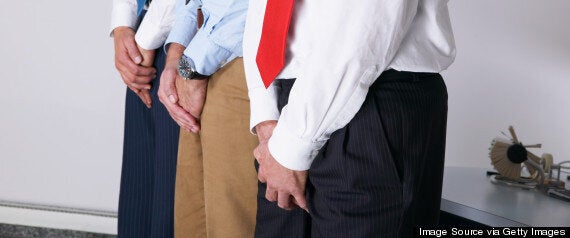Despite testicular cancer being the most common form of cancer in men aged 15 to 45, a new study shows that more than 60% of men in this age group would not know how to check themselves for the disease.
The survey, carried out by UK male cancer charity Orchid, questioned 3,000 men aged 15 to 45 on their testicular cancer knowledge.
It found that 68% do not know how to check themselves for signs of the condition and 50% of those surveyed would shy away from showing their GP if they discovered a lump.

According to the NHS, each year around 2,300 men between the ages of 15 and 45 are diagnosed with the illness, making testicular cancer the most common male cancer.
Chief executive of Orchid Rebecca Porta, said: "Sadly our findings indicate that men who delay seeking an early diagnosis may risk the disease spreading and a poor response to the treatment."
Considering that when diagnosed, testicular cancer can be treated effectively - there is a 98% chance of survival with treatment if caught early - it seems critical that everything is done to check for the disease.
See below for a list of symptoms, from Orchid and NHS website.
SYMPTOMS:
- A dull ache or sharp pain in your testicles or scrotum, which may come and go
- A feeling of heaviness in your scrotum
- A dull ache in your lower abdomen (stomach area)
- A sudden collection of fluid in your scrotum (hydrocele)
- Fatigue
- A general feeling of being unwell
- Dragging sensation in 29% of cases
- Breast swelling or tenderness (called gynaecomastia). This is rare but may be caused by hormones, which are produced by some types of testicular cancer
- Enlarged lymph nodes in the back, which have enlarged due to spread of cancer
If you notice a lump in your testicles - don't panic. You should see your GP but bear in mind that only 4% of testicular lumps tend to be cancerous.
How do you check your testicles? Orchid advises: "Get to know your balls. Every time you are in the bath or shower examine each testicle - that way you’ll spot any changes. Also, roll each testicle between your thumb and forefinger to check that the surface is free of lumps and bumps - don't squeeze!"
If you are diagnosed with testicular cancer, the treatment depends on the type of cancer you have - whether it is a seminoma or a non-seminoma cancer, and also at what stage you have been diagnosed.
The first course of treatment will include removing the testicle which contains the tumour - called an orchidectomy - this will also be followed by a course of chemotherapy or radiotherapy.
This may sound extreme - but you will still be able to have children with one testicle, and the survival rate of removing the testicle is very high.